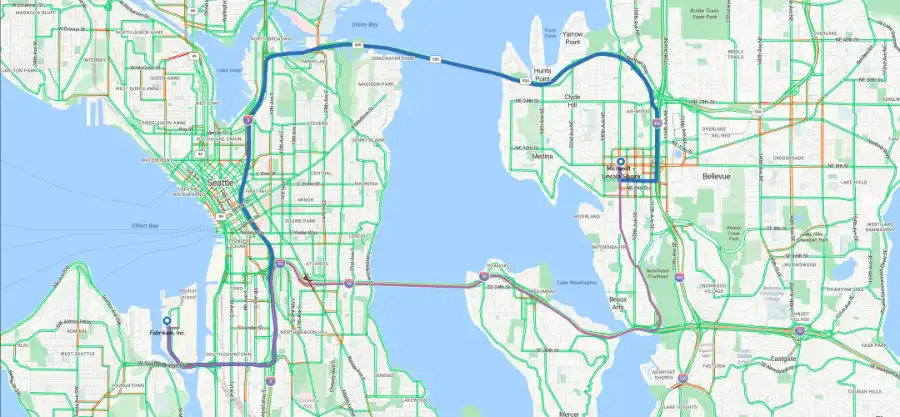Azure Maps’ Routing API and Location Services, for example, are versatile tools, but they’re particularly apt for fleet management and logistics operations. Developers will find a wide array of SDKs and APIs they can use not just for route optimization, but also identifying nearby rest stops, inventory tracking, and more.
Here’s how robust route optimization can help streamline logistics operations for your enterprise.
Why is it important to streamline logistics routes?
Logistics can be a very complex and interdependent industry, where its various components need each other to work well and work on time. Here are some of the ways poorly-managed logistics can hurt your business:
- Delayed Delivery: If shipping is delayed to a destination’s fulfillment center, the last-mile delivery won’t happen on time. If a warehouse is lacking the inventory for an order, it affects every single downstream operation.
- Cost to Your Business: Fulfilling a delayed order can often mean paying a premium to another partner for a quicker delivery.
- Inefficient Asset Routing: If your truck driver is stuck on a damaged highway because your route optimization API didn’t have access to the datasets to warn you and re-route you, both your driver and vehicles will be stuck in an unnecessary delay.
- Effect on Stakeholder Relationships: At a time when delivery times matter almost as much as price, customers are likely to be annoyed with any sort of delay. If it comes from you, they may reassess their business relationship with you in the future.
How integrated route optimization can help

With access to the right route optimization APIs, you can link in a whole host of services that not just improve the experience for your drivers and schedulers, but can create a tangible difference to your bottom line.
Routing Services
At its heart, a routing service is a way to figure out the best way to get your assets from A to B. It should allow for different modes of transportation, including bikes, driving, walking, or even public transit, and be able to tailor routing preferences, such as for highways, toll roads, and so on.
Geospatial Intelligence
Accurate geospatial intelligence is an inalienable companion to route optimization APIs. It tells you about changing road and weather conditions, standalone incidents, construction zones, traffic pile-ups, and more. Having all of this data not just at your fingertips, but integrated into the routing recommendations you’re receiving can prove invaluable. Azure Maps’ Location and Weather Services, for instance, will give you not just current, but historical data which the platform uses to determine the most efficient route for each delivery.
Route Matrix and Route Range
Imagine having a comprehensive analysis performed for you, including several available routing variables to help you identify the best available resource to send for a specific delivery. That’s what Azure Maps’ Route Matrix API does for you. It goes beyond optimizing routing to optimizing business operations. Similarly, the Route Range Service helps you determine the range of each driver and the furthest they can reach based on time and available energy.
Locally-aware
One of the most challenging parts of logistics decisions is routing vehicles, especially trucks, through urban areas. Truck routing can make use of every available local data point you can source, from speed limits and road closures to the presence of ferries, toll roads, county borders, unpaved roads, and more. A good route optimization API will be able to account for this, as well as any local legal restrictions, such as on the transportation of hazardous materials.
EV Data
Optimizing logistics routes shouldn’t be limited to petroleum-powered vehicles. Fleet operators are increasingly incorporating EV vehicles and routing services need to take that into account. EV data helps direct drivers through EV-friendly routes with available charging stations and waypoints.
Weather Data
Route optimization when combined with a robust weather API, can significantly improve end results for you. The Azure Maps Weather Service gives you not just current, but historical and actual weather data for any location or route. It can help predict what sort of weather conditions a driver is likely to encounter and can recommend a different route on the fly based on available data. Azure Maps’ Weather API also provides real-time updates on weather conditions and any changes that might affect ongoing deliveries.
Level up your logistics business with Azure Maps’ route optimization APIs
Integrated route optimization isn’t just about helping a driver avoid a busy road; it has the capacity to impact the breadth of your business operations, cut costs, and improve stakeholder relationships across the board. Like to know more about Azure Maps APIs and how they can achieve similar results for you? Contact an expert to get started. You can also explore some of our interactive Azure Maps demos to get a sense of what our services can do.


